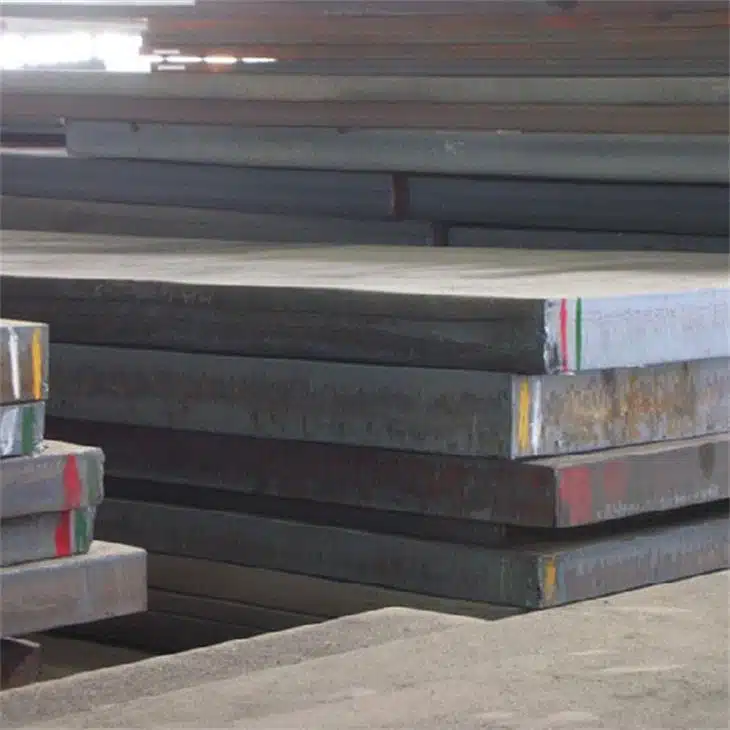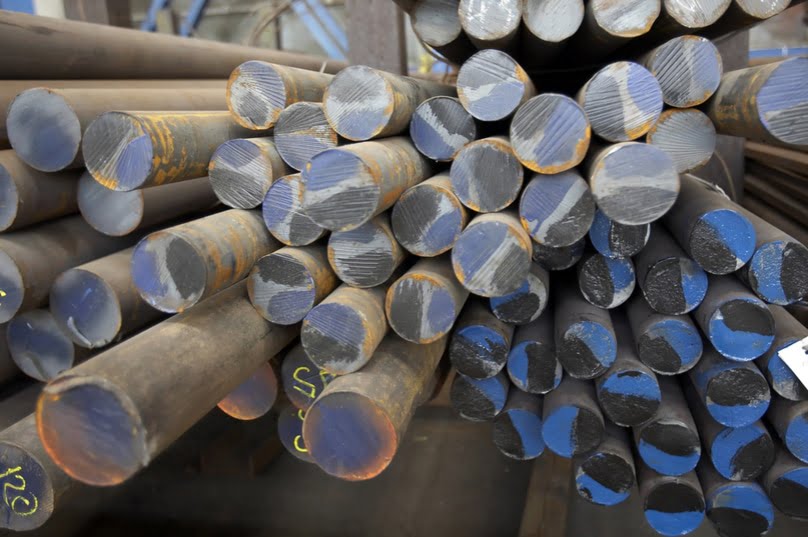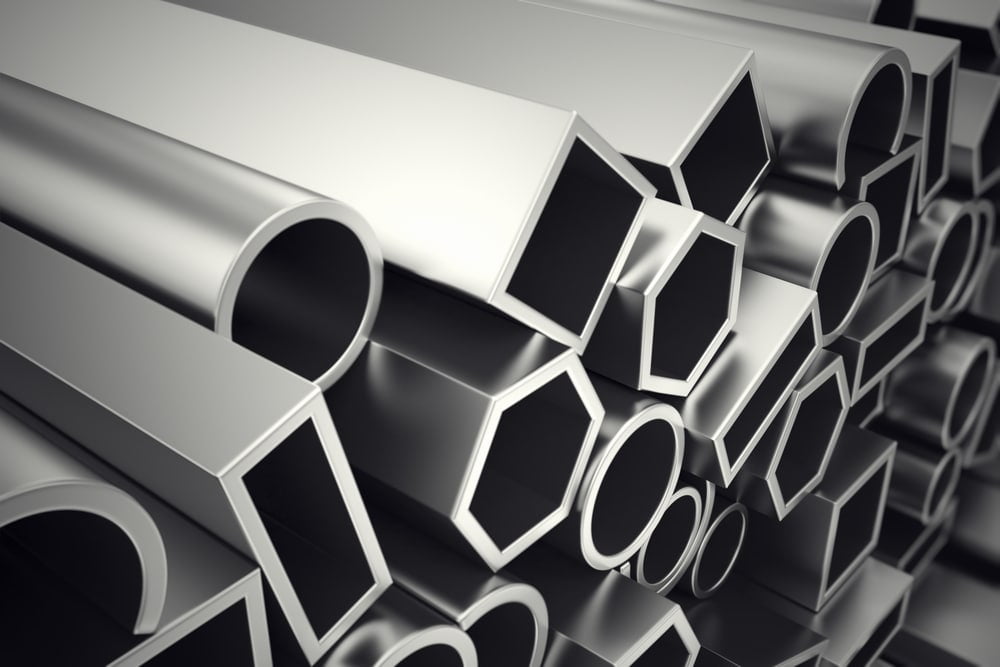4037 Alloy Steel is a versatile engineering material renowned for its balance of strength, toughness, and wear resistance. This comprehensive guide delves into the properties, applications, and production processes that make 4037 Alloy Steel an indispensable component across various industries.
What is 4037 Alloy Steel?
4037 alloy steel is a versatile and widely used medium-carbon alloy steel known for its favorable combination of strength, impact toughness, and wear resistance. Classified within the American Iron and Steel Institute (AISI) system as a chromium-molybdenum or ‘chromoly’ steel, it merges the essential elements of iron, carbon, chromium, molybdenum, and other minor additives. The presence of chromium enhances its oxidation and corrosion-resistant capabilities while molybdenum boosts tensile strength and hardness.
Designated by the “40xx” series in AISI nomenclature indicates that this material contains molybdenum at typically around 0.20-0.30%, which differentiates it from the “41xx” family where the second digit signifies a higher presence of carbon. Often employed in applications where moderate strength combined with superior toughness is required, such as in automotive components, forged fittings, fasteners, machinery parts, and more. Its versatility makes it an attractive option for various engineering applications that require both strength and ductility.

Pros of 4037 Alloy Steel
| Advantage | Description |
|---|---|
| High Tensile Strength | Capable of withstanding substantial loads and pressures without breaking or deforming significantly. |
| Improved Toughness | Exhibits excellent resistance to impact at varying temperatures, reducing the risk of fracture. |
| Enhanced Hardenability | Possesses the ability to be hardened through heat treatment, acquiring increased strength and wear resistance. |
| Wear Resistance | Demonstrates strong durability against surface wear, particularly in moving mechanical parts. |
| Machinability | Amenable to machining into complex shapes while maintaining structural integrity. |
| Cost-Effectiveness | Offers a balanced performance-to-cost ratio making it economical for large-scale production needs. |
Cons of 4037 Alloy Steel
| Disadvantages | Explanation |
|---|---|
| Weldability | 4037 alloy steel can be more challenging to weld compared to other alloys. Preheating and post-weld heat treatment are often necessary to prevent cracking, which adds complexity to fabrication processes. |
| Hardness | Due to its high hardness after heat treatment, 4037 can be less ductile than other steels, making it more prone to chipping or breaking when subjected to high impact or shock-loading conditions. |
| Corrosion Resistance | This steel has lower corrosion resistance relative to other stainless steels; thus, in corrosive environments, additional precautions like coatings or inhibitors might be needed. |
| Machinability | When not annealed or pre-treated correctly, the material can be difficult to machine due to its hardness and can cause rapid wear on cutting tools resulting in higher maintenance costs. |
| Cost | Higher-grade alloy steels like 4037 frequently come at a premium price due to their specialized processing and heat-treating requirements which could increase overall project expenses. |
Mechanical Properties of 4140 Alloy Steel
| Property | Value |
|---|---|
| Tensile Strength | 655 MPa (95,000 psi) average |
| Yield Strength | 415 MPa (60,300 psi) average |
| Elongation at Break | 25.7% in 50mm |
| Reduction of Area | Typically 55.70% |
| Hardness, Brinell | 197-237 (depending on tempering temperature) |
| Hardness, Rockwell B | 92-98 (depending on tempering temperature) |
| Modulus of Elasticity | 205 GPa (29,700 ksi) |
| Mechanical Property | Description |
|---|---|
| Tensile Strength | – Represents the maximum tension a material can endure before breaking. – Indicates the material’s ability to withstand pulling or stretching forces. |
| Elongation | – Signifies how much a material can stretch before breaking. – Indicates the material’s ability to deform plastically before failure. |
| Yield Strength | – Marks the point at which a material begins to experience permanent deformation. – Represents the stress level at which the material no longer returns to its original shape after the applied force is removed. |
| Hardness | – Outlines a material’s resistance to surface indentation and wear. – Provides a measure of the material’s ability to withstand localized deformation and abrasion. |
| Fatigue Strength | – The ability to withstand repeated loading cycles without failure. – Typically around 450 MPa (65,300 psi) for a sample size with a radius of less than or equal to seven inches. |
| Impact Toughness | – Measured through the Charpy V-notch impact test. – Impact energy can be above 54 Joules (40 ft-lbf) if adequately heat-treated. |
| Heat Treatment Effects | – Heat treatment can adjust hardness and toughness through quenching and tempering at various temperatures. – Higher tempering temperatures tend to decrease hardness but increase toughness. |

Chemical Composition of 4037 Alloy Steel
4037 alloy steel’s chemical makeup typically comprises:
| Element | Percentage (%) |
|---|---|
| Carbon (C) | 0.35 – 0.40 |
| Manganese (Mn) | 0.70 – 0.90 |
| Chromium (Cr) | 0.75 – 1.05 |
| Molybdenum (Mo) | 0.20 – 0.30 |
| Silicon (Si) | 0.15 – 0.35 |
| Phosphorus (P) | Max 0.040 |
| Sulfur (S) | Max 0.040 |
Trace amounts of other elements may also be present but only in tiny fractions that do not significantly affect the material’s overall performance.
Carbon acts as a primary hardening element, enhancing the tensile strength of the steel when heat-treated, while manganese contributes to toughness and hardenability. Chromium adds to wear resistance and enhances corrosion resistance, whereas molybdenum further increases the hardness and high-temperature strength—silicon aids in deoxidizing the steel during its production process.
Moreover, phosphorus and sulfur are kept at a minimum as they are generally considered impurities that could impact both ductility and toughness unfavorably if present in higher quantities.
Physical Properties of 4037 Alloy Steel
A key physical property is the density of 4037 alloy steel, which typically stands at around 7.85 grams per cubic centimeter. This measurement is crucial when considering the weight-to-volume ratio for engineering applications where material weight can affect performance or cost.
It features electrical resistivity properties relevant to applications where electrical conduction or resistance is a factor. The electrical resistivity directly influences considerations such as power loss and heat generation in circuitous paths.
| Property | Value |
|---|---|
| Density | ~7.85 g/cm³ |
| Electrical Resistivity | Specific value based on composition |
Thermal Properties of 4037 Alloy Steel
The thermal properties of 4037 alloy steel are critical to understand, especially for applications that involve exposure to varying temperatures. This category includes characteristics such as thermal conductivity, coefficient of thermal expansion, and specific heat capacity, all of which influence the material’s behavior under thermal stress.
When evaluating 4037 alloy steel, its ability to conduct heat is denoted by its thermal conductivity. Generally, steels have decent thermal conductivity which varies depending on composition and treatment processes. The coefficient of thermal expansion is also vital; this measures how much the metal expands when heated. A lower coefficient indicates less expansion with temperature changes, which translates into dimensional stability in heated environments.
Specific heat capacity is another significant aspect of the thermal properties. It represents the amount of heat required to change the temperature of a unit mass by one degree Celsius and affects how quickly or slowly a material will reach its desired operation temperature.
In terms of numbers:
| Property | Value |
|---|---|
| Thermal Conductivity | Around 42.7 W/(m·K) |
| Coefficient of Thermal Expansion | Approximately 11.5 µm/(m·K) at 20°C |
| Specific Heat Capacity | About 477 J/(kg·K) |
It should be noted that these values can be influenced by other factors such as tempering and working processes, so they should serve as a general guide rather than absolute constants for every instance of this steel type. Manufacturers often specify material data sheets that include more precise values suitable for engineering calculations in specific circumstances where components made from 4037 alloy steel will encounter substantial temperature variations during service.

What Is the Carbon Content of 4037 Alloy Steel?
The carbon content of 4037 alloy steel is a fundamental aspect that determines its characteristics and suitability for various applications. This grade of steel falls within the medium-carbon category, which contains carbon percentages generally ranging between 0.3% to 0.6%. The specific level of carbon in 4037 alloy steel is typically around:
| Element | Carbon (C) Percentage |
|---|---|
| C | Approximately 0.35% |
How Is 4037 Alloy Steel Made?
The manufacturing process of 4037 alloy steel is a complex sequence that requires precision and control. The fundamental steps involved in producing this material include:
- Melting and Casting: The initial step in the production of 4037 alloy steel involves melting its constituent elements in an electric arc furnace (EAF). Scrap metal, often comprising a blend of carbon and alloy steels, is melted down at extremely high temperatures. Furthermore, alloys such as chromium, molybdenum, and manganese are added to the molten mix to achieve the desired chemical composition.
- Refining: After melting, the slag—impurities consisting of unwanted elements—is removed to purify the melt. The steel is then subjected to secondary refining tactics such as argon oxygen decarburization (AOD), which aids in fine-tuning the steel’s chemical composition while lowering carbon content and eliminating other unwanted impurities.
- Casting: Once refined to its specified composition and temperature, the liquid alloy steel is cast into molds or directly formed into continuous strands (continuous casting).
- Hot Working: After casting, 4037 alloy steel may undergo hot working processes such as forging or hot rolling. These methods help eliminate any porous areas that formed during solidification.
- Annealing: To relieve internal stresses caused by hot working and altering microstructure for desired mechanical properties, annealing can be performed wherein the metal is heated to a specific temperature and cooled down slowly.
- Cold Working (if necessary): Additional shaping of this medium-carbon alloy can be achieved through cold working techniques like drawing or rolling at room temperature for improved surface finish and closer dimensional tolerances.
- Heat Treatment: A crucial step in tailoring the final properties of 4037 alloy steel is heat treatment; most commonly employed methods include quenching (rapid cooling) followed by tempering (reheating to a lower temperature), which imparts enhanced hardness while minimizing brittleness.
- Surface Finishing: Depending on its final application, 4037 alloy may receive surface treatments such as coating or polishing to improve corrosion resistance or aesthetic appeal.
Machinability Rating of 4037 Alloy Steel
4037 alloy steel boasts a balanced machinability rating that makes it suitable for various manufacturing processes. It’s generally rated as having good machinability compared to other alloy steels. The alloy’s content of chromium and molybdenum contributes to its ability to be processed effectively through conventional methods such as milling, turning, and drilling.
It is common practice to use the American Iron and Steel Institute (AISI) B1112 steel grade as a baseline reference with a machinability rating set at 100%. In comparison, 4037 alloy steel typically presents a machinability rating slightly above or around that baseline figure, thus offering an efficient balance between performance and workability.
To quantify this attribute in more tangible terms:
| Material | AISI/SAE Designation | Machinability Rating (% relative to 1212) |
|---|---|---|
| Baseline Material (Free-cutting steel) | 1212 | 100% |
| Alloy Steel | 4037 | 70-80% |
Equivalents of 4037 Alloy Steel
In the global marketplace and across various standards, alloy steels are often recognized by different designations and specifications. This holds true for 4037 alloy steel, which is known under several equivalents depending on the standardizing body or country-specific classification. Knowing these equivalents is crucial for industries that operate internationally or source materials from various regions. Below is a tabular representation of common equivalents of 4037 alloy steel, based on different standard organizations:
| Standard Organization | Equivalent Designation |
|---|---|
| AISI (American Iron and Steel Institute) | 4037 |
| SAE (Society of Automotive Engineers) | 4037 |
| ASTM (American Society for Testing and Materials) | A322, A331, A519, A547 |
| DIN (German Institute for Standardization) | 1.7220 / 34CrMo4 |
| EN (European Standard) | 34CrMo4 / 1.7220 |
| JIS (Japanese Industrial Standards) | SCM435 |
What Are the Common Forms of 4037 Alloy Steel Material?
The common forms of 4037 alloy steel include:
| Form | Description |
|---|---|
| Bar | Round, square, or hexagonal shapes; used for shafts and structural components. |
| Wire | Thin diameters; typically used for springs, cables, and wire mesh. |
| Forgings | Shaped by compressive forces; ideal for parts requiring structural integrity. |
| Tubing | Hollow cylindrical forms; utilized in fluid delivery systems or structural frames. |
| Plate & Sheet | Flat pieces; suitable for construction elements or automotive body parts. |
In conclusion
In conclusion, 4037 alloy steel possesses a multitude of properties that can be advantageous for various applications across numerous industries. Its combination of strength, hardenability, and fatigue resistance makes it a suitable candidate for parts subjected to stress and impact.
If you wish to delve deeper into the realms of 4037 alloy steel or have intricate questions about how it can benefit your project, we encourage you to visit our website. Our platform offers extensive resources and expert insights that will further inform your decision-making process. Should you require personalized assistance or wish to explore tailored solutions that align with your unique requirements, do not hesitate to contact us directly. Our team of professionals is committed to providing superior guidance and ensuring you are equipped with the right materials to drive innovation in your field.

